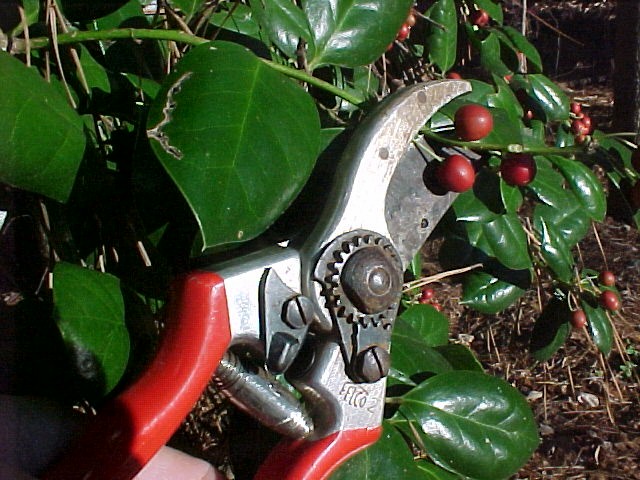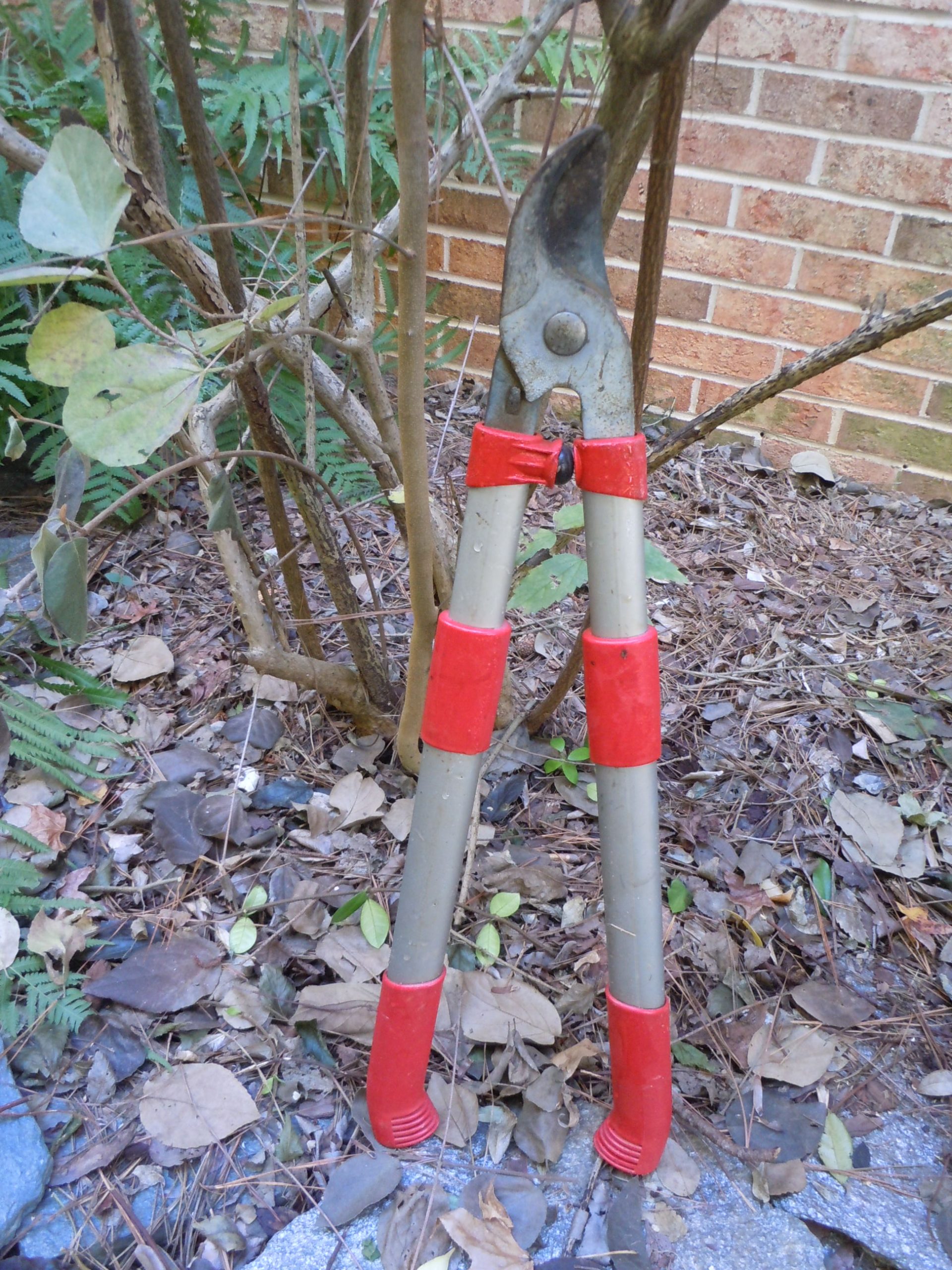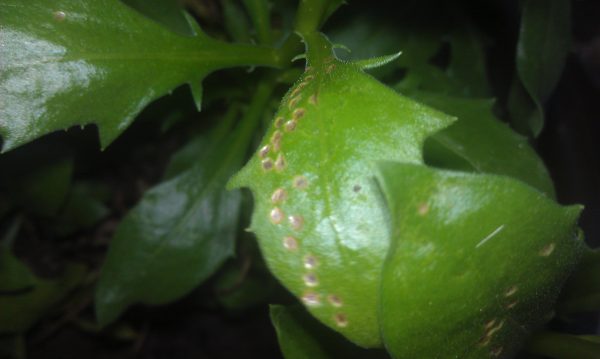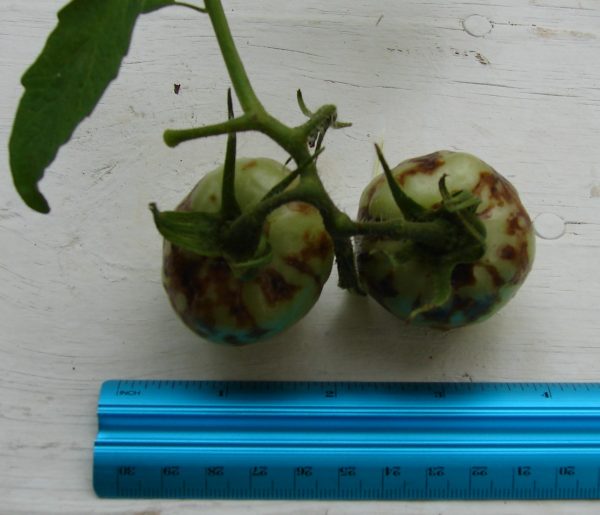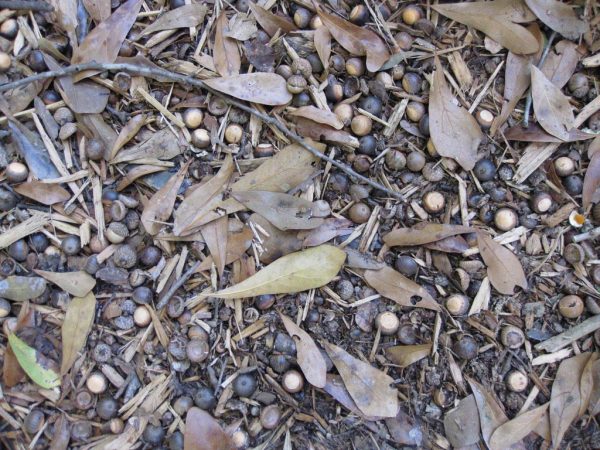Basic Tools for Beginning Gardeners
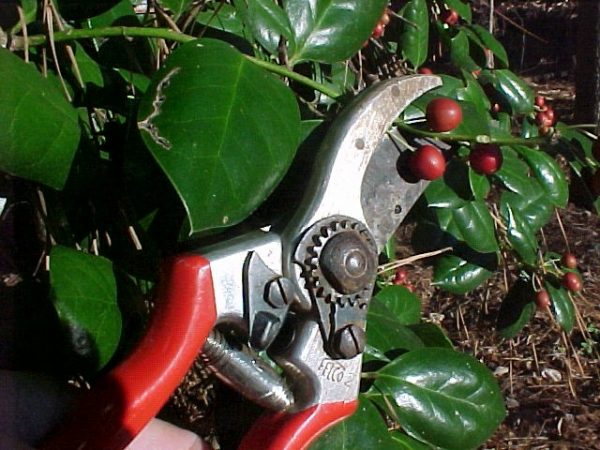
Here is my list of basic tools for beginning gardeners. Give it the once-over and email me by clicking here if you think I’ve left something out.
DIGGING TOOLS
Round point shovel – I like a long handled shovel more than one with a short handle. It gives me more leverage when I’m turning over a new bed in heavy clay soil. Some folks, on the other hand, find a short-handled model easier to use with its typicle “D handle”.
Heavy duty trowel – Forget the light quality ones, get one that can take all of the abuse you give it. If it can hammer nails (yes, you might want to do that someday), a good trowel will dig (and hammer) without complaint.
CUTTING TOOLS
Good quality hand pruner – I personally prefer a Felco #2 pruner (click for sources) because I can easily sharpen and replace the blade. There are other brands that work well too. Get one with a bypass blade (like scissors) not an anvil blade.
Long-handled lopper – steel or thick wooden handles insure that you can apply all your strength to the job. Again, I much prefer bypass blades rather than the less-expensive anvil blades.
WATER HANDLING TOOLS
Water hose – Most 5/8 inch hoses carry water from your faucet just fine. The key is to buy one with heavy duty brass ends. If you are clumsy and step on (or drive over) a flimsy brass end, you’ll appreciate one that doesn’t deform under your weight.
Water wand (click for sources)– second in importance only to a water hose. The wand transforms a damaging blast of water into a gentle cascade.
Watering can – look for a filler hole that’s not directly under the handle. The watering can is much easier to fill if the hole is off center.
Soaker hose – I must have a half-mile of soaker hose snaked among my beds and shrubbery. It minimizes evaporation loss and puts water just where you want. On the other hand, chipmunks and squirrels will sometimes gnaw on it during drought.
Water timer – how are you gonna know how much water you apply without using one of these? An easy-to-use, dial-adjusted fifteen dollar model lets you set it and forget it.
BODY GEAR
Leather gloves – indispensable when pruning roses or using a post hole digger.
Kneeling pad – my AARP-eligible knees aren’t padded like they once were; a thick pad keeps pebbles and sweetgum balls from embedding themselves in my kneecap.
MISCELLANEOUS
2 pesticide sprayers – one only used for herbicides, one for applying everything else to your plants
Wheelbarrow – I grew up using a standard, single-wheel barrow but some find them unwieldy. There are numerous two-wheeled models to consider instead. If all you’re moving is lightweight leaves in the fall, use a ten-dollar plastic tarp. You can pile dirt or debris on it and drag your load to its destination.
Jute twine & heavy scissors – I’m constantly tying back recalcitrant rose canes and limber shrub branches that impede my garden walks. Jute twine is easy to tie, inconspicuous, and it decomposes after a single season.


